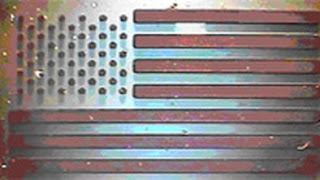Years of effort by UC researchers Vesselin Shanov and Mark Schulz, co-directors of the University of Cincinnati Smart Materials Nanotechnology Laboratory, along with Yun YeoHeung and students, led to the invention of the method for growing long nanotube arrays. Employing this invention, the UC researchers (in conjunction with First Nano, a division of CVD Equipment Corporation of Ronkonkoma, New York) have produced extremely long CNT arrays (18 mm) on their EasyTube System using a Chemical Vapor Deposition (CVD) process (see figure "a" in the photo).
Moreover, in a re-growth experiment on a separate substrate, they produced an 11-mm long CNT array.
Shanov notes that their research has had four major milestones this year already.
“First, we were able to grow the arrays up to 18 mm,” he says, ticking off the achievements. “Second, we produced a uniform carpet of 12-mm carbon nanotube arrays on a 4-inch wafer, which moves the invention into the field of scaled-up manufacturing for industrial application. Third, we filed a patent application on the inventions at the US Patent and Trademark Office and, fourth, we were invited to participate in a very prestigious workshop (invitation-only) organized by NASA and Rice University, where we presented our latest results. The workshop focused on “Single Wall Carbon Nanotube Nucleation and Growth Mechanisms.” This event was attended by the best scientists in the world working on synthesis carbon nanotubes, from Japan, China, Europe and the United States. Our presentation was accepted very well and confirmed that with the current record of 18-mm-long carbon nanotube arrays, and also with the big area growth on 4-inch wafers, we are leading in manufacturing extremely long CNT arrays.”
The Fine Print and Nano Details. The UC substrate for growing CNT arrays is a multilayered structure with a sophisticated design in which a composite catalyst is formed on top of an oxidized silicon wafer. Its manufacturing requires a “clean room” environment and thin-film deposition techniques that can be scaled up to produce commercial quantities. CNT synthesis is carried out in a hydrogen, hydrocarbon, water, argon environment at 750 degrees Celsius.
The achievement of growing centimeter-long nanotube arrays provides hope that continuous growth of CNTs in the meter length range is possible. Leonard Rosenbaum, president and CEO of CVD Equipment Corporation, is looking forward to continuing the partnership with UC to bring this technology from the laboratory into full-scale production. UC is also partnering with another company to develop production of long CNT arrays that can be spun into fibers.
This research was supported by National Science Foundation (NSF) grant CMS-051-0823 (program directors Shih-Chi Liu & K. Jimmy Hsia) and the Office of Naval Research (program director Ignacio Perez) through North Carolina A&T SU (program directors Jag Sankar & Sergey Yarmolenko). CVD Equipment Corporation engineers developed and built the EasyTube System used by First Nano to grow the long CNT arrays.
Date: 4/27/2007 By: Wendy Beckman Phone: (513) 556-1826 Other Contact: Vesselin Shanov Other Contact Phone: (513) 556-2461 Photos By: Vesselin Shanov and Mark Schulz
About the University of Cincinnati (UC) The University of Cincinnati, home to more than 35,000 students, offers students a balance of educational excellence and real-world experience. Since its founding in 1819, UC has been the source of many discoveries creating positive change for society, including the first antihistamine, co-op education, the first electronic organ, the Golden Gate Bridge designer and the oral polio vaccine.
Each year, this urban, public, research university graduates 5,000 students, adding to more than 200,000 living alumni around the world. UC is the largest employer in the Cincinnati region, with an economic impact of more than $3 billion. The University of Cincinnati is located in Cincinnati, Ohio.
Technorati Tags: nanofibers or Nanoscientists and Nano or Nanotechnology and nanoparticles or Nanotech and nanotubes or nanochemistry and nanoscale or nanowires and Nanocantilevers or nanometrology and University of Cincinnati or Carbon Nanotube Arrays and oxidized silicon wafer or Office of Naval Research


















No comments:
Post a Comment